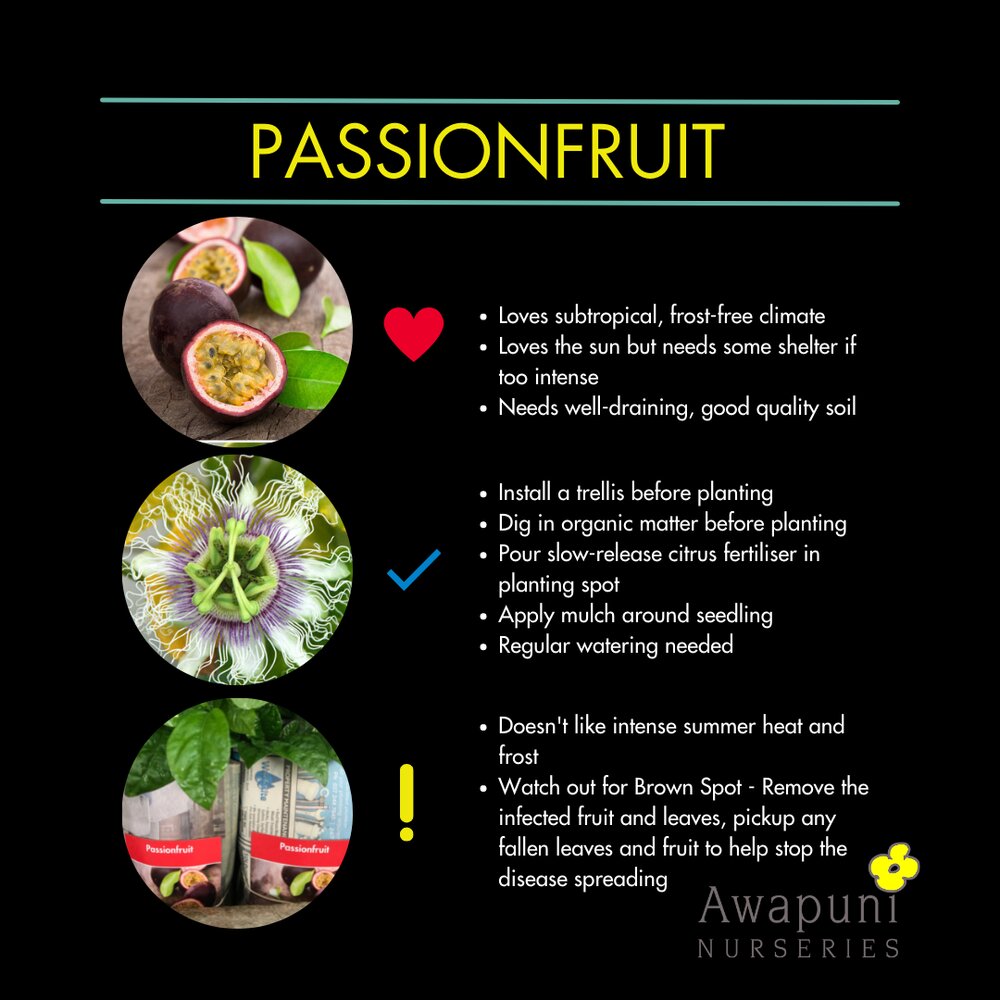Growing passionfruit for pleasure
Passionfruit are a tasty summer fruit, enjoyed in desserts, smoothies and salads; or how I devour them - simply cut in half and eaten straight out of their purple shell.
Passionfruit are climbers, and need a strong trellis or structure to climb across. They’ll flourish up a fence of a sunny vege plot, or garden shed. This makes them a popular addition to an already full garden, as they take up relatively little ground ‘real estate’.
Passionfruit are pretty easy to grow, but do require a bit of patience. They typically don’t fruit until 12-18months after you’ve planted them. Which makes it extra satisfying to pick your own juicy passionfruit straight from the garden; especially when you see their price in the shops.
Passionfruit prefer a sunny, frost-free climate, growing well in the northern regions of New Zealand, including Gisborne and Nelson. They like a fertile, free-draining spot in your garden, and will thrive with lots of added nutrients and regular watering, especially when they start fruiting.
Once you’ve found your perfect spot, prepare the soil by digging in some compost, and slow release fertiliser. You can grab your passionfruit seedlings from Awapuni Nurseries online shop and have them delivered direct to your door. We guarantee satisfaction, so if you’re not entirely happy with your delivery, we will replace them.
When you’ve got your seedlings, plant them roughly 2m apart, and apply some mulch to keep the weeds at bay, and to help retain water.
You’ll want to train your vine vertically up to the top level of your climbing structure. Encourage it by pinching off the laterals, so it grows a strong vertical leader. Then when it reaches your desired height, pinch off the top of the main vine to let its side arms reach out in both directions.
Come late spring, your vine should bloom with striking purple flowers. These mature into fruit, but can still take a couple months to ripen. You’ll know they are ready when their dark purple skin begins to wrinkle slightly. And unlike other fruits, passionfruit won’t continue to ripen once picked.
Passionfruit can be quite susceptible to aphids and other bugs, which can cause leaf curl. Spraying neem oil will help, or try a garlic, cooking oil and water combo spray for a more natural alternative.
A healthy vine can easily produce over 100 fruit a season. If you’re lucky enough to be overloaded, remember the pulp freezes well in ice cubes too.
After fruiting, prune back your vine a lot to overwinter. Even vines that have seemingly died can easily resprout and flourish, year after year. A strong vine can last around 7 years, but as they will peak in fruit around 2-3 years, it’s best to not leave it until they’ve past their best, to plant new vines.
Something to watch out for are brown spots. Read more here.

